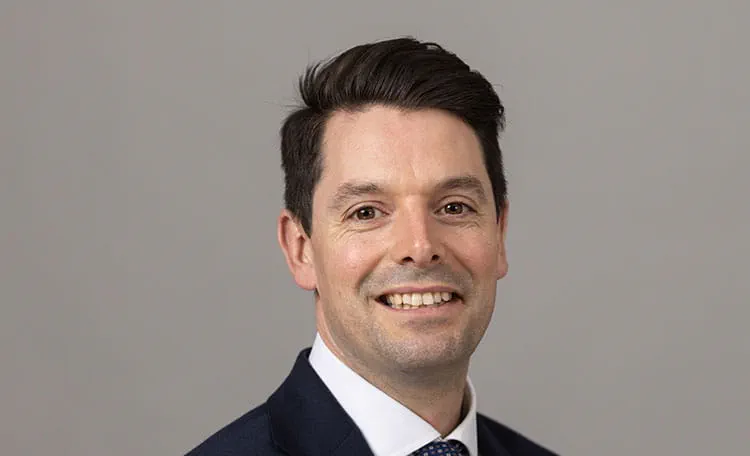- Cushman & Wakefield’s report tracking 32 data centre markets across EMEA shows operational capacity grew 9% year-on-year and total market size by 16
- London will be the first market in EMEA to reach 2GW over the next 3-5 years
- Paris overtakes Amsterdam to rank fourth for total market siz
- Significant pipelines add Helsinki and Cardiff-Newport as new market entrants
A total of 21GW of data centre capacity across EMEA was operational, under construction, or in planning stages at the end of 2024 with operators increasingly looking beyond traditional powerhouse markets to meet demand, according to Cushman & Wakefield.
The real estate services firm said operational capacity grew 9% year-on-year and the pipeline (under construction and in planning) by 16% over the same period. It tracks the top 32 data centre markets across EMEA, comparing their current maturity and growth potential over the next decade.
While the established FLAP-D (Frankfurt, London, Amsterdam, Paris, and Dublin) markets continue to dominate both for operational capacity and, along with Milan which has joined them as a powerhouse region, for total market size, operators are also shifting to emerging markets such as Helsinki. The Finnish capital recorded significant growth over the past year, reaching in 594MW total capacity by the end of 2024 – putting it ahead of other Nordic markets, Oslo and Stockholm. Helsinki has the third most capacity under construction (210MW) in EMEA, while the wider Nordic region accounts for nearly a quarter of capacity under construction across EMEA.

Andrew Fray, Head of EMEA Data Centres at Cushman & Wakefield, said: “Most data centre markets continue to face significant challenges, including limited land availability, power constraints, and strict sustainability regulations, which is impacting costs, timelines and significantly investment uncertainty for both operators and investors. Ironically, despite being characterised as a threat in some quarters, the emergence of DeepSeek may offer a solution to some of the energy demands associated with data centres. By reducing the power required for AI operations, it could contribute to more sustainable and cost-effective data centre infrastructures. Some of the development pipeline may be re-evaluated but the bigger picture is that competition in the AI space was inevitable and is fundamentally good for the market. It is notable that DeepSeek has become a significant topic so quickly, despite having no prior track record and facing data security concerns, but its presence undoubtedly adds to the market and will drive further innovation.
“Regardless of where the demand is coming from, AI data processing takes place in data centres. The region’s largest ‘powerhouse’ markets account for nearly 6GW of pipeline supply, fuelling broad market growth across the region, and new construction activity is set to double current capacities. Sustainability efforts continue to accelerate, with operators adopting green hydrogen, waste heat utilisation, and renewable energy mechanisms, whether directly or indirectly. Meanwhile, emerging markets and remote campuses sitting outside the established metropolitan areas are also set to completely reshape the data centre landscape.”
Market maturity
Cushman & Wakefield categorises EMEA’s city-level data centre markets as powerhouse (900MW+), established (300-900MW), developing (150-300MW), and emerging (<150MW).
Powerhouse: London, Frankfurt, Dublin, Paris, Amsterdam and Milan account for more than 47% of the operational data centre capacity (4.4GW) in EMEA and more than 50% of the under construction and planned capacities (5.8GW) combined.
London will become the first EMEA city market to reach 2GW in operational capacity over the next 3-5 years. It has 1.44GW of operational capacity and a pipeline of 1.5GW set to be delivered (265MW under construction, 1,260MW planned). Some 53 operators have deployed 135 data centres and colocation operators continue to dominate in London. While power constraints are a significant issue in London, the UK Government has designated UK data centres as critical national infrastructure, and revised planning policy, providing clear signals of stability and growth for investors.
Second-placed Frankfurt has a strong 1.3GW development pipeline, but, at 812MW, third-placed Dublin’s is heavily constrained by lack of land, power and substation upgrades.
Paris moved up a place to EMEA’s 4th largest market, overtaking Amsterdam, thanks to consistently high operational capacity growth, 32% up year-on-year, and a fast-growing pipeline of 1,040MW. France's environmental regulations are set to deliver carbon neutrality by 2050 so sustainability will be pivotal for expansion in the city and numerous data centres in Paris are being designed to operate using 100% renewable energy.
Amsterdam, with just 444MW in its pipeline, is suffering lingering effects of the 2019 moratorium, stringent regulations, and political opposition. Nationwide restrictions on hyperscale centres and Amsterdam's local limits on new developments have shifted demand to other European cities, notably Paris, despite designated areas like Haarlemmermeer and Eemshaven. Milan continues to put pressure on the FLAP-D markets with 820MW in pipeline.
Established: Helsinki, Madrid, Abu Dhabi, Dubai, Oslo, Johannesburg, Cardiff-Newport, and Berlin account for about 13% of EMEA’s total operational capacity. Together they have 1,244MW of live capacity, and are on track to more than double in size if the development pipeline (2,180MW) is built out over the next few years. Many operators are expanding their presence or considering entry into these markets due to strategic locations and available infrastructure for data centre operations. Berlin, for example, offers a significant alternative to Frankfurt.
Helsinki is a new entrant to this category having grown significantly year-on-year, both with capacity going live and the pipeline growing significantly to 358MW. Another new entrant is Cardiff-Newport, which Cushman & Wakefield identifies as an area of high growth in the UK. Though it has just 87MW currently operational, it has a large pipeline of 231MW. Microsoft and Vantage already have significant data centres there, new UK operator Latos has announced plans for a 90MW data centre, and in October a large data centre and renewable energy park was approved. It will have a battery storage capacity of 1,000MW making it one of the largest battery storage facilities in the world.
Developing: Stockholm, Zurich, Warsaw, Tel Aviv, Copenhagen, Reykjavik and Cape Town account for 8.3% of the operational capacity (785MW) in EMEA, up from 7.7% in H1 2024, and are expected to increase their share. Together they have a pipeline of 815MW.
Emerging: Emerging markets are in their early development stages, yet many data centre operators find them attractive due to business-friendly environments, increasing consumer demand, suitable land, available power, fibre connectivity, and the establishment of new cloud region. Vienna, Lagos, Barcelona, Riyadh, Brussels, Munich, Istanbul, Zaragoza, Marseille, Athens and Lisbon. Together they account for less than 6.5% of the total operational capacity (608MW) in EMEA.









